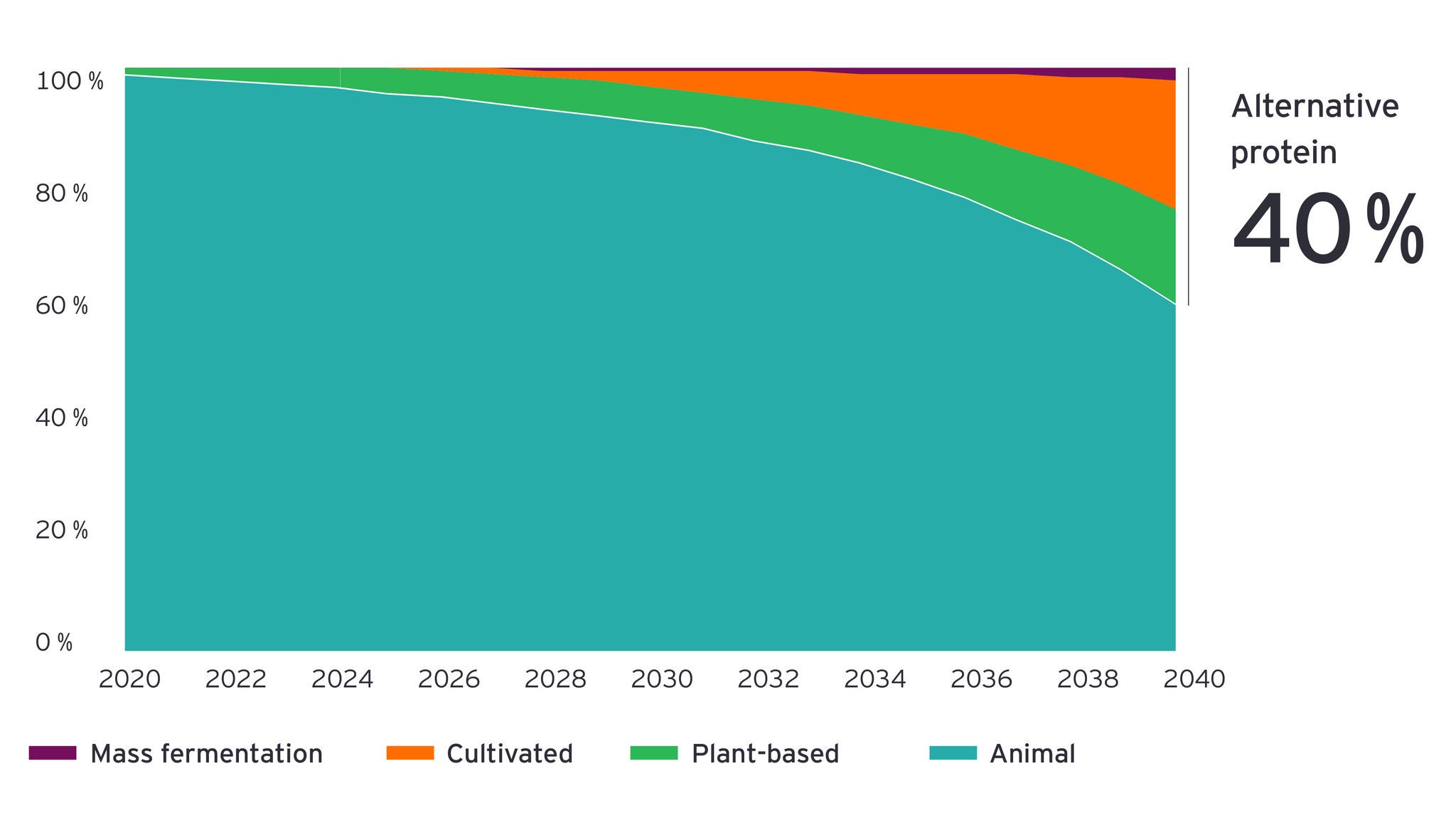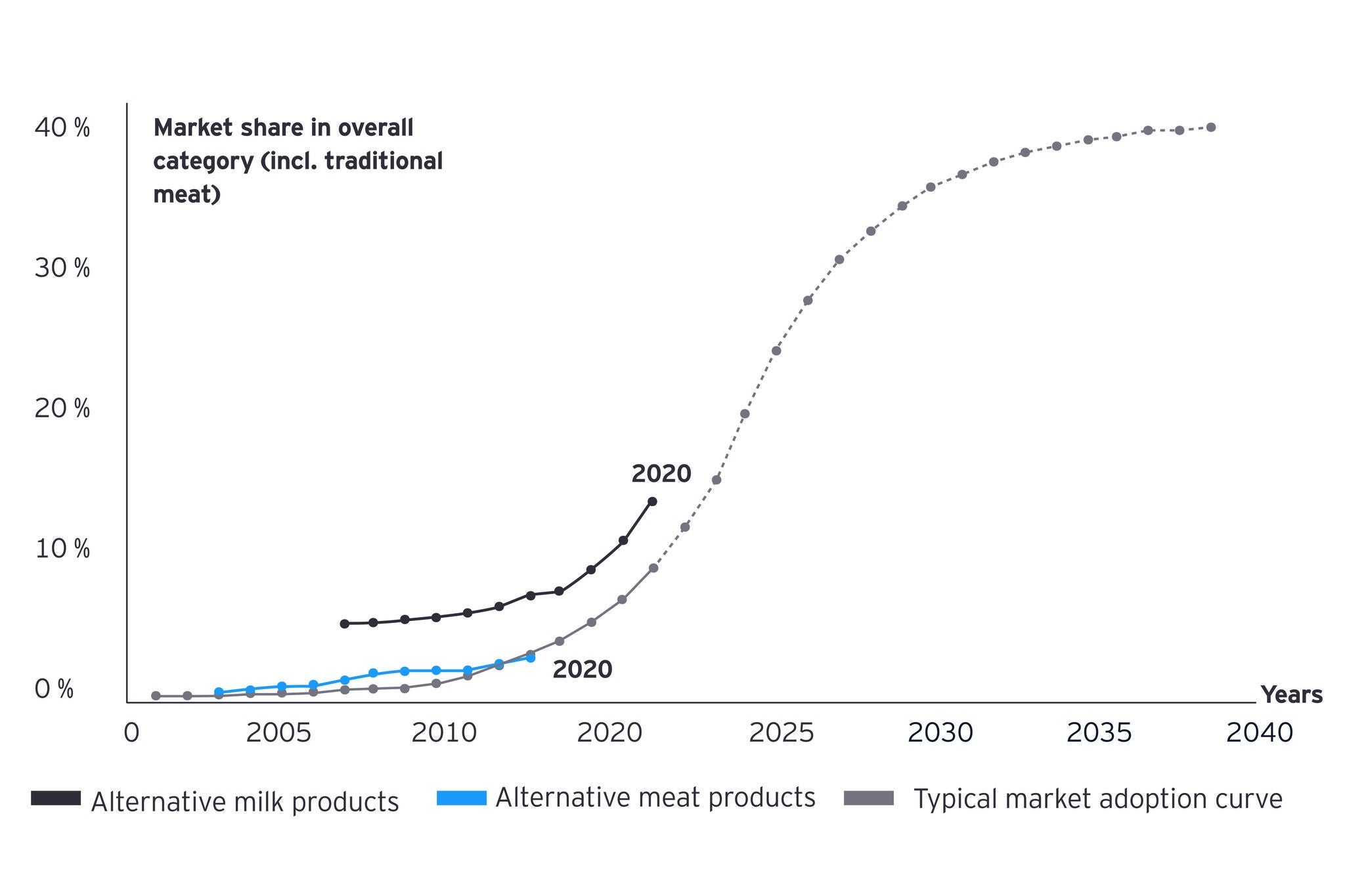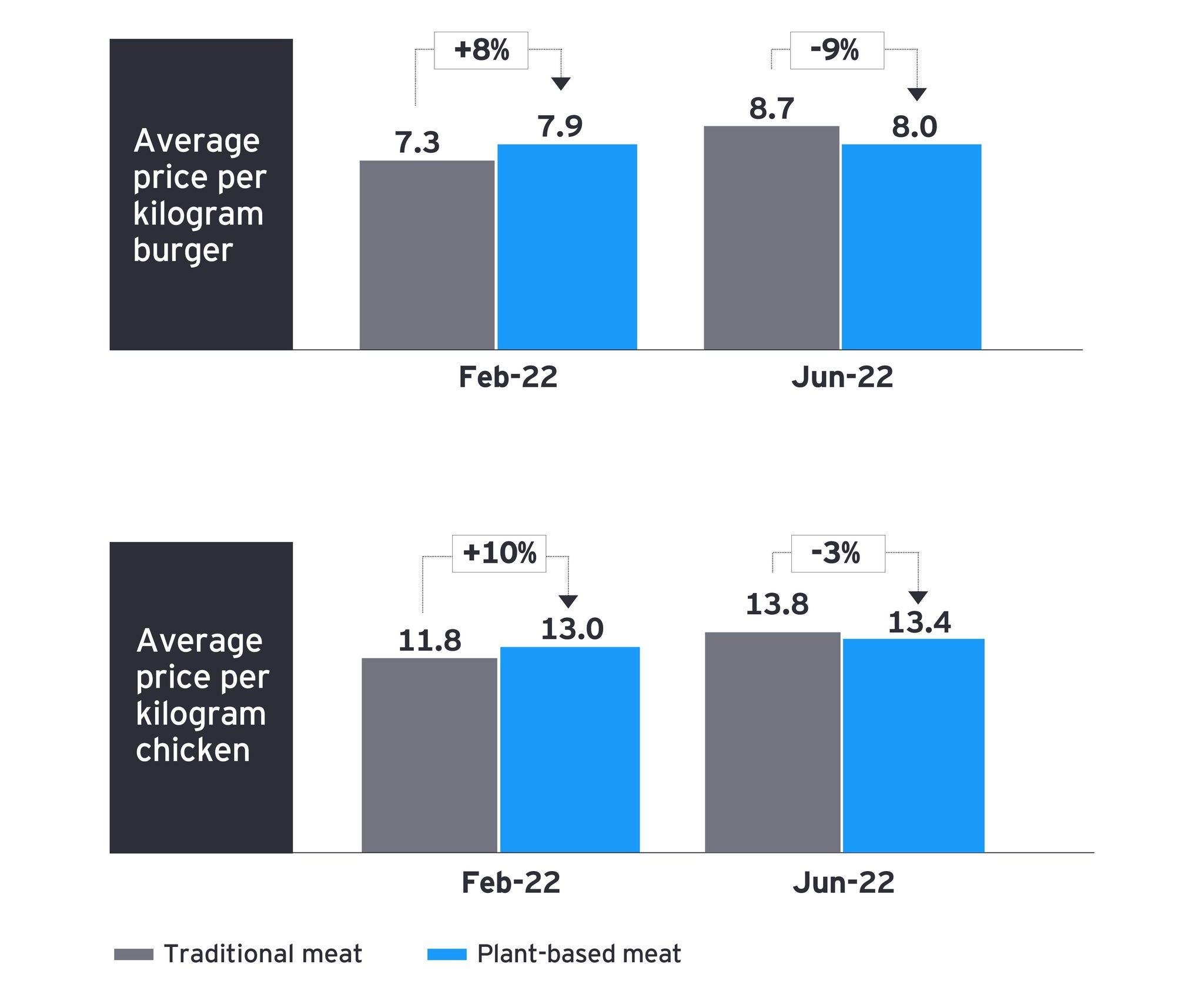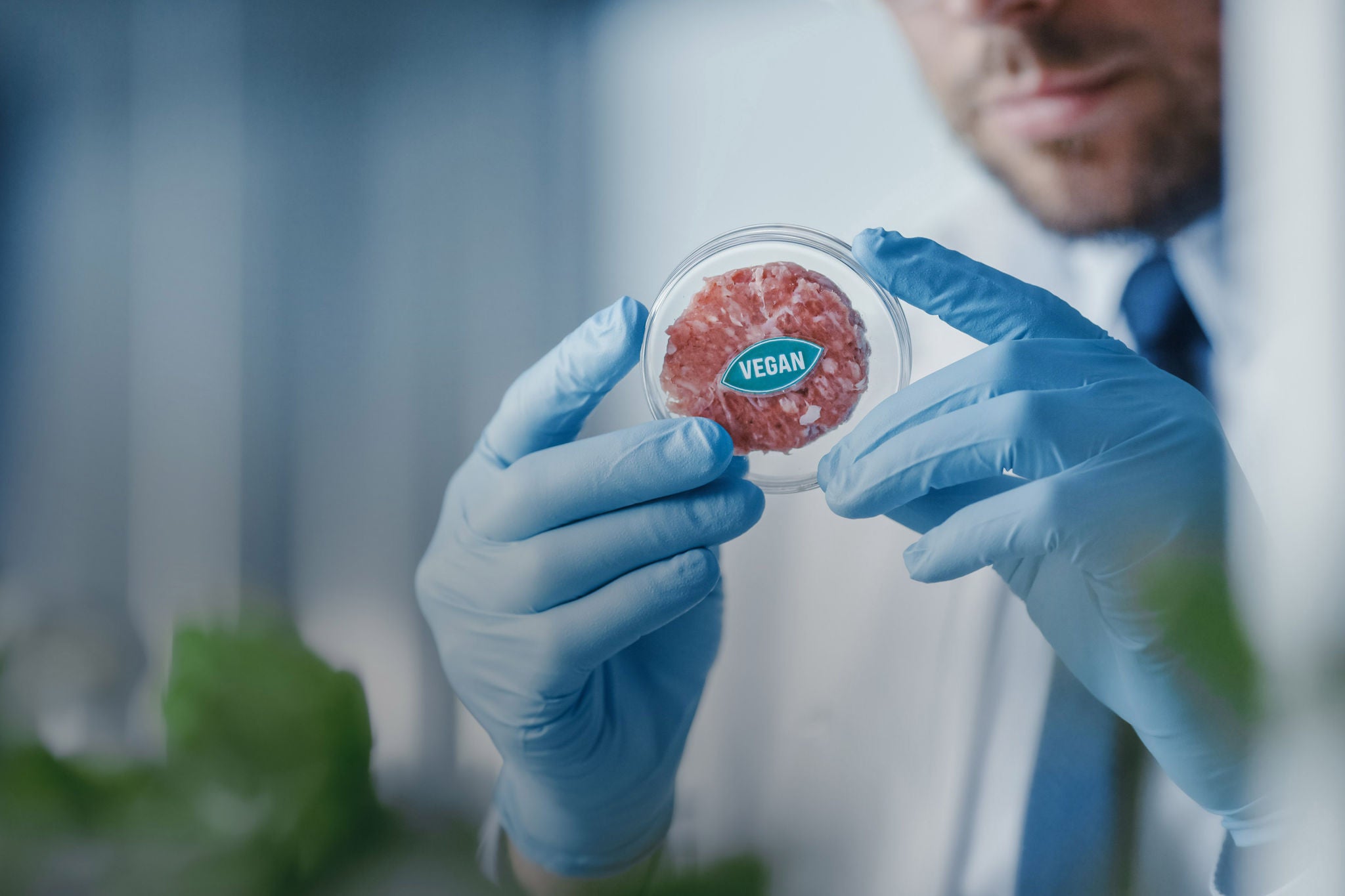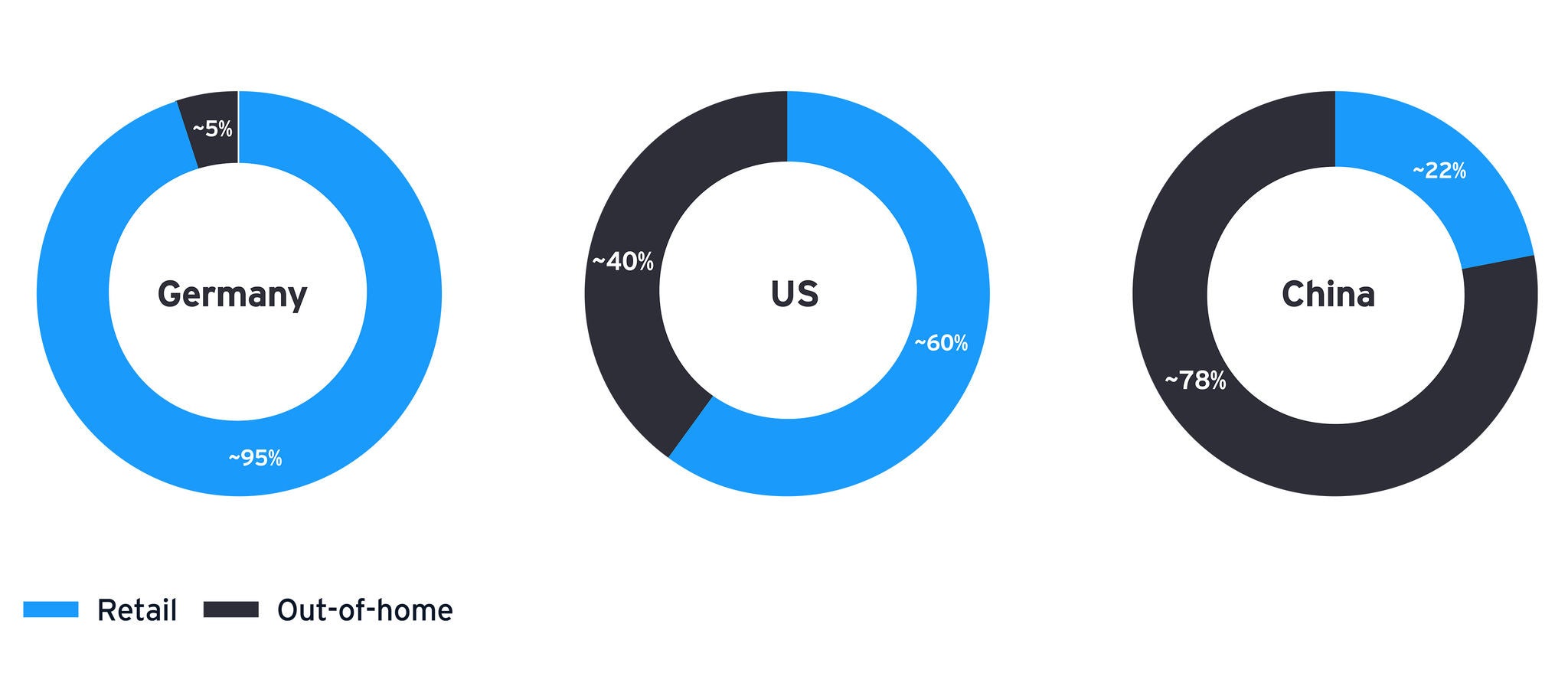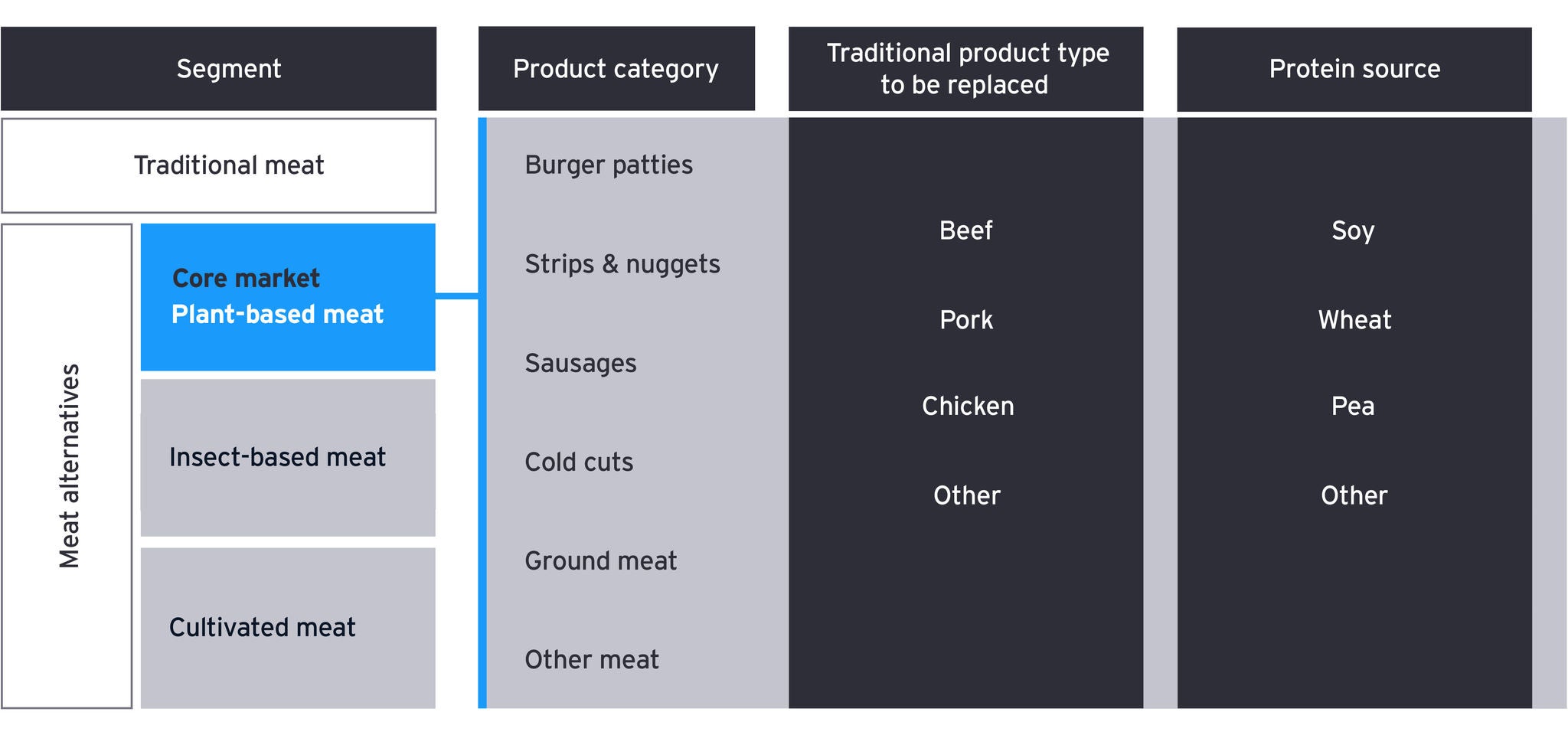Source: Company Websites; Desk Research, IRI data; Store checks; EY-Parthenon analysis
Fast-Moving Consumer Goods companies: invest wisely, now
FMCG companies, as established players, play a pivotal role in the plant-based meat market with their international footprint, extensive production capacity, existing distribution channels and financial power. They have been broadening their presence through M&A (e.g., Unilever with The Vegetarian Butcher) and ramping up of production capacities (e.g., US$100m investment by one of the large FMCG-players in a plant-based meat production facility in China in 2020). They have also been investing in R&D (e.g., Unilever invested US$85m in a plant-based R&D center in 2019), and strategic partnerships with veggie specialists are also on the rise (e.g., PepsiCo’s joint venture with Beyond Meat) and food service companies (e.g., The Vegetarian Butcher and Burger King). As a result, FMCG companies have experienced strong growth, helped by the fact that they have established supply chain networks that allow them to make changes to production more rapidly than conventional protein producers. This enables them to meet rapid shifts in consumer demand or changes in channel preferences.
The war in Ukraine and the COVID-19 pandemic have underscored the vulnerability of global supply chains. Both have led to upstream challenges such as fertilizer scarcity. This affects farmers of all sizes, who will need help transitioning to more efficient and climate-independent practices such as vertical farming. By incentivizing the development of more localized or regional high-value, protein-yielding crops that are used directly for food instead of feed, FMCG players can spur farmers to transition. As a result, all participants will benefit from more resilient supply chains as well as added transparency and traceability of raw material inputs.
FMCG companies face competition, primarily from established veggie specialists that benefit from a strong brand image and are known to be still more agile and innovative than large FMCG players. To add further challenges, FMCG current product portfolios, featuring highly processed foods with long shelf lives and long ingredient lists, are often not aligned with future consumer preferences. Retail chains favor the idea of installing strong category leaders in addition to the established FMCG players due to their already high bargaining power. As the market remains highly competitive and fragmented in the short term, FMCG companies will continue to invest and drive market consolidation.
Veggie specialists: grow, get acquired or die
Veggie specialists represent a fragmented group of companies from start-ups to vegan niche players. They are typically plant-based meat and/or veggie-related category specialists who push innovations and have an appealing unique selling point. While these players have historically shaped and driven the growth of the plant-based segment, smaller brands now must fight for their market share, and new start-ups are struggling with barriers to entry from large retail chains plus limited financial power and supply chain or production instability. Nevertheless, it is expected that veggie specialists, especially already established brands, will continue to play an important role with retailers, including discounters. Over the past few years, they have managed to become household names and have been the primary recipients of substantial investments into the alternative meat industry.
The ability to secure investment plays a very important role in this segment. The alternative protein industry received around US$3.1b in investment in 2020, representing more than half of the overall investments from 2010 to 2020. About US$700m of this investment went to one alternative meat producer. For the many start-ups operating in the alternative meat space around the world, the competition for funds and market share is intensifying. This is in parallel with ongoing consolidation of a highly dynamic market with a great deal of growth potential. Smaller players could become lucrative acquisition candidates for large brands. In the meantime, established veggie players can leverage their good brand image to increase market penetration. Most notable are the co-branding partnerships, for example, Beyond Meat with large fast-food chains.
The recent supply chain disruptions have elevated the importance of investments in supply networks and are likely to further drive consolidation, all in line with the requirements and pulls from consumers. Veggie specialists, who often do not have the broad network or professional buying organizations like FMCG players or traditional meat producers, might face drastically increasing input costs due to expiring raw material contracts. Securing enough high-quality raw materials at competitive prices is likely to be a top priority. Some plant-based brands have already started to form closer partnerships to overcome supply shortages and bundle procurement volumes. But despite these efforts, rising input prices are likely to be inevitable in the coming years, putting pressure on margins. As alternative meat products are already trading at a green premium, they do not want to pass on higher prices to consumers but are instead pressured to become more efficient.
Traditional meat producers: transform or slowly diminish
Naturally, the trend toward “faux meat” is a threat to the meat industry, even if alternative protein meets new consumer demand rather than fully overtaking the traditional meat market. To make matters worse, further market dynamics put pressure on the meat-producing industry. These include:
- Saturated/declining markets in Europe
- Increasing competition in the low-price segment, especially from players outside of Europe
- Increasing regulation, mainly focused on animal welfare and hygiene standards
- Volatility and exposure to crisis, such as an increase in animal epidemics
- Continued high negotiating power of FMCG retailers
All these factors are putting pressure on gross margins, also resulting from idle capacities, and are leading to an overall decline in profitability and investment capacity. However, the trend toward meat substitute products also has the potential to offset some of the challenges – but only if the meat producers move quickly.
Traditional meat producers can apply their heritage in meat production, strong knowledge of meat consumers and existing supply chains to the plant-based meat market. In addition, they can benefit from brand spill-over effects, especially with consumers who are not generally averse to traditional meat but are looking to reduce their meat consumption. The key challenges will be attracting the re-financing required for investments to meet regulations as well as building or repurposing production facilities and securing alternative protein fields. On a positive note, financing may be more forthcoming for a non-100% traditional meat business, as plant-based meats is a growing segment with a more positive outlook than traditional meat.
An example of a traditional meat player moving successfully toward plant-based meat and regional resources is Rügenwalder Mühle in Germany. By transforming its existing operations early on, it became the clear frontrunner in the German plant-based meats market with more than 40% overall share. The company dominates the market with around a 75% share in cold cuts, indicating the potential for traditional meat producers. Crucially, it leveraged a clear first-mover advantage to develop its brand perception, its supply chain and an extensive product portfolio across all segments at various price points.
Overall, traditional meat producers are under pressure to transform to remain relevant in the long term. While plant-based meat offers incredible potential, it also requires overcoming a large set of challenges to become a real contender with an innovative and differentiated offering. The increasing risks associated with the sourcing of raw materials has led traditional manufacturers like Rügenwalder Mühle to invest more in the domestic cultivation of raw materials. Even though it has already taken steps to counteract the consequences of the current geopolitical and climate events, it has been forced to pass on the increased prices to its customers in the alternative protein segment.
Private label producers: who will it be?
Private label offerings are gaining in popularity, as retailers introduce private label, plant-based meat products as a perceived cheaper alternative to branded products. Discounters are expanding their private labels, which already represent a significant part of discounters’ sales in that segment. Private labels are targeting products with an assured high sales volume and margin (e.g., sausages, burger patties), and retailers in turn are selectively reducing the number of independent brands on offer. However, production of the private label products will most likely be taken over by one of the three existing manufacturing groups, as retailers generally do not have the necessary production capabilities. Of the three, major traditional meat producers are most likely to become the dominant producers of private label plant-based meats, as they possess the necessary infrastructure, capacity and logistics:
- FMCG companies are focused on building a brand in the plant-based meat market. After reaching a critical production volume, they may selectively start offering private label products and compete with traditional meat producers for private label contracts in the medium term.
- Veggie specialists are focusing on building strong brands with a vegetarian and vegan focus. They generally lack large production capacity and are more likely to use existing capacity for branded products with higher margins instead of trying to become a low-cost leader in the medium term.
- Traditional meat producers’ core business is branded meat. Nevertheless, they are often supplying private-label meat products and are the first movers with plant-based meat private label offerings. They possess the infrastructure, capacity, and distribution channels and can offer the lowest prices thanks to their economies of scale. Therefore, they can be expected to take over most of the plant-based private label production in the medium term.
Overall, as the market matures, the number of plant-based meat brands per category is expected to consolidate, balancing FMCG brands, independent brands (traditional meat and veggie) and private labels. The specific split within each subcategory will be highly dependent on the respective markets and the strategic moves of the players. Certainly, players that embrace technology and innovation and truly understand how to navigate consumer-driven megatrends of the global food system will win.





